Convergent evolution and targeting of diverse E2 epitopes by human broadly neutralizing antibodies are associated with HCV clearance
- PMID: 38518779
- PMCID: PMC11247618
- DOI: 10.1016/j.immuni.2024.03.001
Convergent evolution and targeting of diverse E2 epitopes by human broadly neutralizing antibodies are associated with HCV clearance
Abstract
The early appearance of broadly neutralizing antibodies (bNAbs) in serum is associated with spontaneous hepatitis C virus (HCV) clearance, but to date, the majority of bNAbs have been isolated from chronically infected donors. Most of these bNAbs use the VH1-69 gene segment and target the envelope glycoprotein E2 front layer. Here, we performed longitudinal B cell receptor (BCR) repertoire analysis on an elite neutralizer who spontaneously cleared multiple HCV infections. We isolated 10,680 E2-reactive B cells, performed BCR sequencing, characterized monoclonal B cell cultures, and isolated bNAbs. In contrast to what has been seen in chronically infected donors, the bNAbs used a variety of VH genes and targeted at least three distinct E2 antigenic sites, including sites previously thought to be non-neutralizing. Diverse front-layer-reactive bNAb lineages evolved convergently, acquiring breadth-enhancing somatic mutations. These findings demonstrate that HCV clearance-associated bNAbs are genetically diverse and bind distinct antigenic sites that should be the target of vaccine-induced bNAbs.
Keywords: B cells; BCR sequencing; HCV; antibody evolution; broadly neutralizing antibodies; hepatitis C virus; monoclonal antibodies; neutralizing epitopes; vaccine.
Copyright © 2024. Published by Elsevier Inc.
Conflict of interest statement
Declaration of interests J.R.B. and C.O.O. have filed a provisional patent 63/470,326 related to monoclonal antibodies described in this manuscript.
Figures
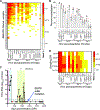
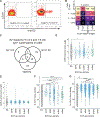
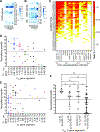

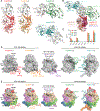
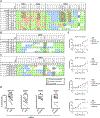
Comment on
-
Analysis of antibodies from HCV elite neutralizers identifies genetic determinants of broad neutralization.Immunity. 2022 Feb 8;55(2):341-354.e7. doi: 10.1016/j.immuni.2021.12.003. Epub 2022 Jan 5. Immunity. 2022. PMID: 34990590 Free PMC article.
References
-
- van der Meer AJ, Veldt BJ, Feld JJ, Wedemeyer H, Dufour JF, Lammert F, Duarte-Rojo A, Heathcote EJ, Manns MP, Kuske L, et al. (2012). Association between sustained virological response and all-cause mortality among patients with chronic hepatitis C and advanced hepatic fibrosis. JAMA 308, 2584–2593. 1487498 [pii];10.1001/jama.2012.144878 [doi]. - DOI - PubMed
-
- Davis GL, Alter MJ, El-Serag H, Poynard T, and Jennings LW (2010). Aging of hepatitis C virus (HCV)-infected persons in the United States: a multiple cohort model of HCV prevalence and disease progression. Gastroenterology 138, 513–521. S0016-5085(09)01885-X [pii];10.1053/j.gastro.2009.09.067 [doi]. - DOI - PubMed
-
- Prevention, C.f.D.C.a. (2018). Viral Hepatitis Surveillance Report 2018 — Hepatitis C.
-
- Suryaprasad AG, White JZ, Xu F, Eichler BA, Hamilton J, Patel A, Hamdounia SB, Church DR, Barton K, Fisher C, et al. (2014). Emerging Epidemic of Hepatitis C Virus Infections Among Young Non-Urban Persons who Inject Drugs in the United States, 2006–2012. Clin. Infect. Dis 10.1093/cid/ciu643. - DOI - PubMed
-
- Osburn WO, Fisher BE, Dowd KA, Urban G, Liu L, Ray SC, Thomas DL, and Cox AL (2010). Spontaneous Control of Primary Hepatitis C Virus Infection and Immunity Against Persistent Reinfection. Gastroenterology 138, 315–324. S0016-5085(09)01658-8 [pii];10.1053/j.gastro.2009.09.017 [doi]. - DOI - PMC - PubMed
Publication types
MeSH terms
Substances
Grants and funding
LinkOut - more resources
Full Text Sources
Other Literature Sources
Medical
Molecular Biology Databases

